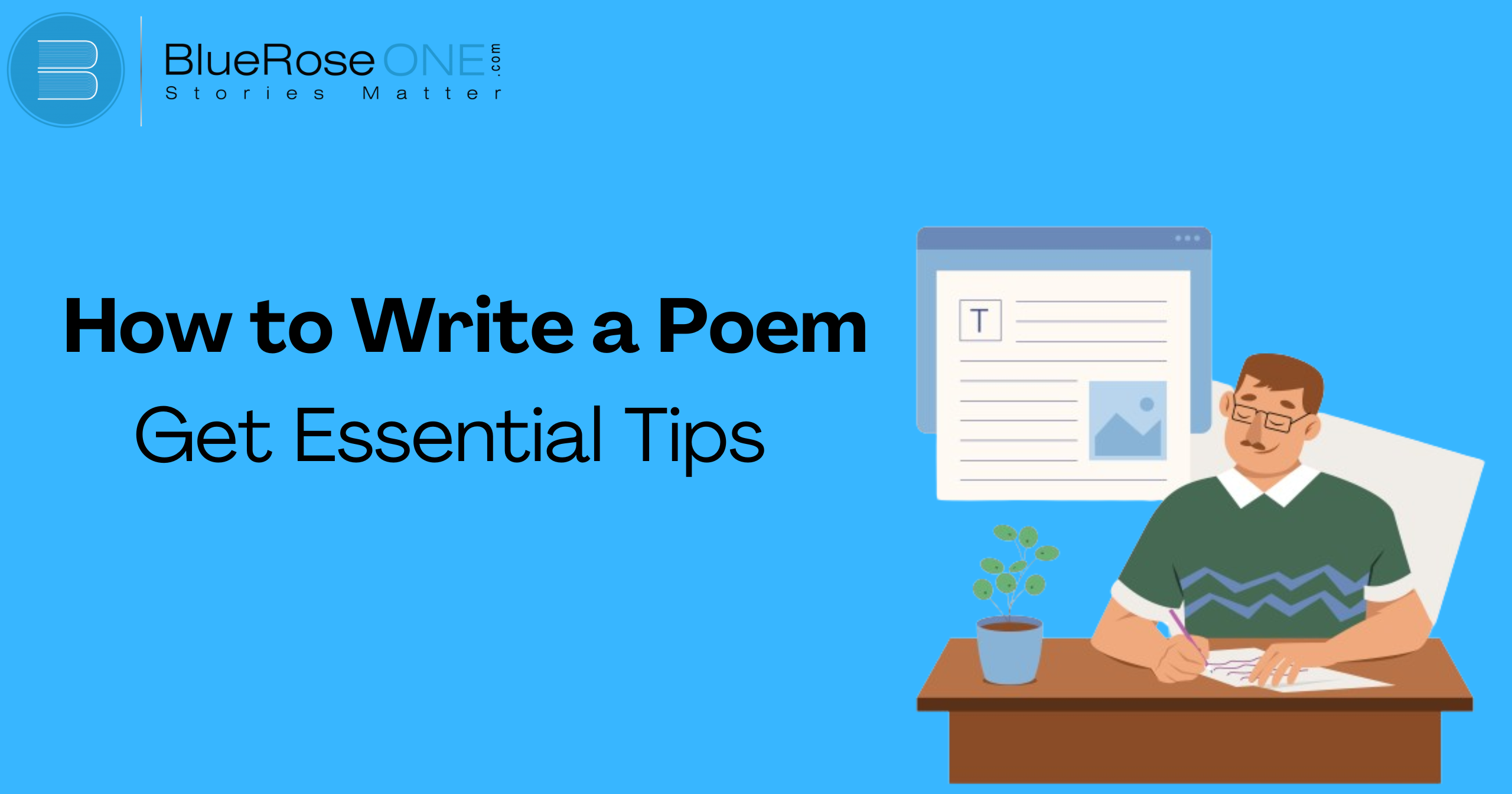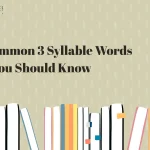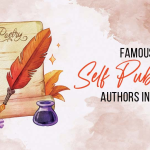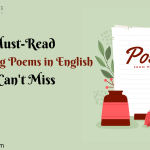Learning how to write a poem may be a really rewarding experience that gives you the chance to communicate your thoughts, feelings, and experiences in a fresh and imaginative way. Knowing how to compose a poem will improve your writing and enable you to create beautiful poems, regardless of your level of experience. This post will go over the essential components of poetry, how to get started, and editing advice.
You may also like: How to Publish a Book | Publsh a Book | BlueRoseOne
What is Poetry?
Poetry is a type of writing that uses a distinctive and frequently rhythmic style to convey concepts, feelings, and narratives. It employs well chosen words, perhaps with rhymes, to evoke strong emotions and mental images in the reader. It’s crucial to concentrate on your feelings and experiences when learning how to write poems. Poetry can be straightforward or complex, but its ultimate goal is to evoke strong emotions in the reader.
Different Types of Poems
Narrative Poems
Poetry that narrates a tale is known as narrative poetry. They share the same characters, storyline, and setting as a novel or short story. Well-known examples are “The Odyssey” by Homer and “The Raven” by Edgar Allan Poe.
To begin learning how to create a poem, consider the narrative you wish to convey. Before you start writing, write a summary of your primary points and characters.
To make the story easier for your readers to picture, use straightforward language and powerful imagery. Composing a narrative poem can be an enjoyable way to incorporate poetic devices with storytelling.
Lyric Poems
Lyric poems are a popular choice when learning how to write a poem. These poems, which are frequently melodic in nature, convey intimate emotions and ideas. They are an excellent place for beginners to start because they are often brief and concentrate on a particular feeling or concept.
Sonnets and odes are two well-known instances. If you want to compose a lyric poem, consider a powerful emotion or event in your life, and then use expressive language to capture that sensation. By using your own experiences, you can establish a strong connection with your readers using this writing approach.
You may also like: Query LetteThe Selection Series in Order: Full Book Guide r vs. Cover Letter: What’s the difference?
You may also read: The Selection Series in Order: Full Book Guide
Free Verse
Free verse is a kind of poetry that is more adaptable and imaginative because it doesn’t adhere to set rhyme or rhythmic standards. When learning how to write a poem, Free verse is a great way to start writing poetry because it lets you concentrate on expressing your ideas without having to worry about following rules.
Because it allows you to experiment with words and make original patterns, this style is ideal for novices. Free poetry was a tool employed by well-known poets like Walt Whitman and Langston Hughes to evoke strong feelings and striking imagery. Simply let your thoughts flow when writing a free verse poem; don’t worry about adhering to established poetry conventions.
You may also read: Literary Fiction vs Genre Fiction: Definition & Examples
You may also like: Best Stephen King Novels for First-Time Readers
Haiku
Haiku is a classic style of Japanese poetry that consists of three lines, each of five, seven, and five syllables, to capture a moment in just seventeen words.
A thorough examination of haiku can yield important insights on the craft of poetry writing. Writers are encouraged to use vivid imagery and straightforward language to express complex feelings or insights in this succinct manner.
Haiku writing entails closely observing the natural world or human experiences and condensing them into a small number of well chosen words. Its framework teaches aspiring poets important lessons about how to convey complicated concepts simply by emphasizing brevity and clarity.
Sonnets
They typically have 14 lines and adhere to a particular rhyme scheme. There are several varieties of sonnets, such as the Petrarchan (or Italian) sonnet, which is separated into an octave and a sestet, and the Shakespearean (or English) sonnet, which consists of three quatrains and a final couplet.
You may improve your use of meter and rhyme, two crucial elements of good poetry writing, by writing sonnets.
You may also like: Top 10 Financial Literacy Books Every Adult Should Read
You may also like: 150+ Vivid Verbs to Supercharge Your Writing Every Writer Should Use
Elements of a Poem
Theme
Knowing the subject matter is crucial to knowing how to compose a poem. The main idea or point the poet wishes to make is expressed in the topic. It provides the poem’s direction and goal.
Themes can include everything from nature and love to hope and suffering. Finding your theme will help you make the best word choices, tone, and visuals to convey your ideas.
The first step in writing a poem is to decide what message you want to convey to your audience. Your poetry will be more powerful and meaningful if you have a defined theme that directs your writing.
Tone
Tone is an essential element to consider when learning how to write a poem. Readers’ perceptions of the poem are influenced by the tone, which expresses the poet’s attitude or sentiments regarding the subject.
Whether it’s happy, sad, furious, or reflective, the tone establishes the atmosphere and aids in getting the point through. Select words and phrases that correspond with the feelings you wish to convey in order to set the appropriate tone.
By paying attention to tone, you may help readers connect with your poetry on a deeper level by making it more relatable and engaging. To compose a poem well, one must first grasp the concept of tone.
You may also read: Fatal Flaw: Definition, Types, Example and More
Imagery
One of the most important things to master when writing poetry is imagery. It entails painting pictures in the reader’s head with the use of colorful and detailed language.
When a poet uses effective imagery, the reader is able to see, hear, smell, taste, or feel what the poet is describing. This method gives the poetry vitality and strengthens the way that topics and emotions are expressed. You can increase the interest and recall value of your poetry by using powerful imagery.
Try to concentrate on particular aspects and using figurative language, such as similes and metaphors, to hone your talents. Composing a poem with strong imagery can significantly increase its impact.
Rhyme Scheme
A poem’s rhyme system is a crucial component. It is the sequence of sounds that each line ends with. ABAB and AABB are two common rhyming schemes in which lines that end with the same letter are identified as such.
The poem has a more melodic rhythm and is more entertaining to read when rhymes are included. Choose a pattern before you start writing, then make sure the final words of each line follow the pattern to create a rhyming scheme. Anybody studying how to create a poem successfully must comprehend and make use of rhyme patterns.
You may also like: 10 Common Copy Editing Mistakes Self Publishers Make (How to Avoid Them)
You may also like: Mistborn Series in Order: Start to Finish
Steps to Writing a Poem
Finding Inspiration
The first step in learning how to create a poem is to find inspiration. Anywhere can serve as a source of inspiration, whether a breathtaking sunset, a meaningful discussion, or a beloved book.
Start by going on a stroll and observing your surroundings. To record your feelings and thoughts, keep a notebook. Reading other people’s poetry or listening to music can occasionally inspire you to write.
Being inquisitive and receptive is crucial. You can start expressing your feelings and thoughts in your own distinctive style by figuring out what moves you.
Choosing a Poetic Form
Selecting a poetic form is a crucial step in learning how to write a poem. Every form has its own structure and set of rules, such as a sonnet or haiku. Consider the message you wish to get across first. A sonnet might be appropriate if you wish to convey intense feelings.
A haiku is ideal for a fleeting idea or moment. Knowing many forms will help you be more creative and efficiently design your poetry. Poem writing can be more fun and have a clearer goal when it experiments with different forms.
You may also like: Book Review: Lord of the Flies by William Golding
Brainstorming Ideas
An essential initial step in writing a poem is brainstorming ideas. Begin by considering your sources of inspiration. It might be a feeling, place, person, or recollection.
Without considering quality or order, jot down everything that comes to mind. This procedure assists you in gathering inspiration for your poetry. Don’t be afraid to utilize pictures or prompts to get your creative juices flowing.
After you’ve compiled a list of ideas, search for recurring themes or emotions that jump out. This will provide you with a solid basis on which to build a meaningful and captivating poem.
Creating a Draft
Making a draft is a vital stage in learning how to create a poem. Put your ideas and sentiments down on paper first, without trying to make everything flawless. You alone have access to this document, so feel free to share your ideas. At this moment, don’t worry about rhyme or structure.
Concentrate on conveying your feelings and the main idea of what you want to say. Later on, you can polish and hone your poem. Writing down your early thoughts is crucial since they will serve as the basis for your finished poetry.
You may also like: Top Digital Transformation Trends in Self-Publishing for 2024
You may also read: 150 4 Syllable Words: Complete List with Meanings and Examples
Developing Your Poem
Crafting Strong Opening Lines
Developing Your Poem starts with mastering the art of crafting strong opening lines. In learning how to write a poem, understanding the importance of these initial words is crucial.
They serve as the gateway to your poem, capturing the reader’s attention and setting the tone for what’s to come. To create impactful opening lines, consider using vivid imagery, evocative language, or a thought-provoking question.
Experiment with different techniques until you find the perfect balance of intrigue and resonance. Remember, the opening lines are your opportunity to make a lasting impression and draw your audience into the world of your poem.
Using Vivid Imagery
A key component of learning how to write a poem is using vivid imagery. Your poem will be more captivating and memorable if you use imagery to let your readers see, hear, and feel what you’re saying. Use sensory-rich, evocative language to conjure up vivid images.
Rather than merely stating, “The garden is beautiful,” for instance, elaborate on its hues, scents, and noises. By using this technique, you may make your poem come to life and give readers the impression that they are actually there. Writing more captivating poems will come from honing your vivid visual talents.
You may also like: Why Professional Book Editing is Essential for Self-Publishing Success
Incorporating Literary Devices
Metaphors and Similes
Similes and metaphors are effective instruments for learning how to create poetry. In a metaphor, two things are directly compared, such as when someone says, “Time is a thief.” Using “like” or “as,” a simile makes a comparison, as in “busy as a bee.”
These literary methods give your work life and interest while enabling readers to perceive familiar objects in fresh ways. Using metaphors and similes in your poetry can help it become more dramatic and memorable by adding depth and passion.
Personification
Personification is a literary device that is used to give non-human things or abstract ideas human characteristics. Personification is a technique for improving the vividness and relatability of your poetry when learning how to compose one.
Saying something like “the sun smiled down on us” conjures up a cozy, inviting image, as if the sun could actually grin. This method makes the poetry more engaging by facilitating readers’ emotional connections with it. Personification is a crucial component of mastering the art of poetry writing since it allows poets to give their verses life and character.
Alliteration and Assonance
Different Poem Types use a variety of literary techniques to improve the beauty of language and establish rhythm. Poetry frequently employs two such devices: assonance and alliteration.
Assonance is the recurrence of vowel sounds within words, whereas alliteration is the repetition of consonant sounds at the beginning of syllables in close proximity. Once you have mastered these approaches, your poetry will have more depth and melody.
Understanding and experimenting with alliteration and assonance can help you create verses that connect with readers and provide a memorable, immersive experience when you’re learning How to Write a Poem.
Structuring Your Poem
It’s crucial to comprehend the many forms of poetry when organizing your own. Every kind has different rules for writing verses. A sonnet, for example, usually has fourteen lines and a particular rhyme system, but a haiku has five, seven, and five syllables.
Contrarily, free verse gives writers more latitude in terms of form and organization. Based on your theme and feelings, choose the kind of poetry you want to compose first. Next, follow that form’s structural guidelines while letting your imagination run wild. Playing around with different forms will improve your poetry and make your readers feel a variety of ways.
You may also like: How to Self-Publish a book in 2024
Publishing Your Poem
Online Platforms
One of the best ways to share your talent with the world is to publish your poetry on internet sites. These platforms provide poets with an easy-to-use means of showcasing their work and making connections with readers around the world.
The importance of selecting the appropriate platform must be understood while thinking about how to create a poem. To efficiently reach your target audience, look for websites that specialize in poetry.
To make sure your poem satisfies the platform’s needs, also become acquainted with its submission guidelines. You may successfully explore the online world and share your lyrical compositions by following these guidelines.
Poetry Magazines
Poetry magazines are essential for presenting fresh viewpoints and voices in the literary community. To create a poem and have it published, there are a few important steps you need remember.
First, look through different poetry publications and identify the ones that fit your subjects and style. After that, thoroughly read their submission criteria to ascertain what is expected of you. Creating a well-edited essay that fits the magazine’s style will make a big difference in your acceptance rate.
Remember to carefully review your work before submitting it, and allow time for responses as they may differ. You can effectively traverse the procedure of publishing your poem if you are persistent and pay close attention to details.
Poetry Competitions
Poem recognition and work exhibition can be achieved through competing in poetry contests. The first step in writing a poem for submission is to thoroughly read and comprehend the competition rules. Be mindful of submission formats, word counts, and themes.
Your chances of winning can be raised by creating a distinctive, captivating poetry that connects with the competition’s theme. You should also rewrite your poetry several times to make sure it is flawless and free of errors.
Do not forget to adhere to submission guidelines exactly and fulfill deadlines. Poetry contest participation helps you hone your craft as a poet in addition to providing chances for recognition.
You may also read: 7 Types of Characters in Fiction (and How to Use Them)
Conclusion
Poetry writing is a creative and self-expression journey. Writing can be a really fulfilling experience, whether you do it for personal fulfillment or to share with others. Continue exploring, honing, and appreciating the craft of poetry.
















